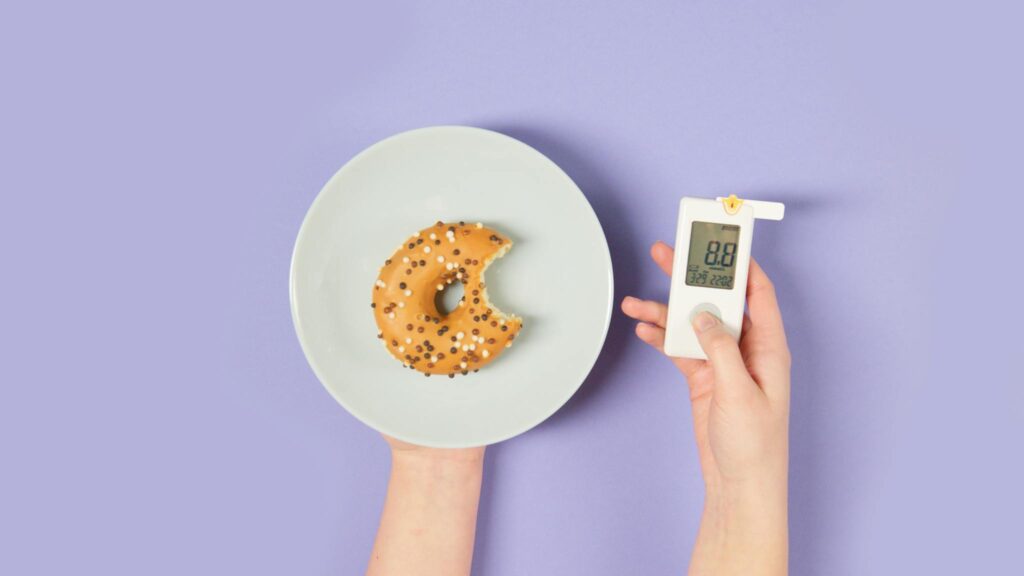A Beginner’s Guide to Health Biometrics: Learn what vital metrics to track, how to measure them, and what they mean for your health journey in 2024. Start smart tracking today!

Understanding Health Biometrics Basics
Health biometrics are measurable indicators of your body’s physical state and function consider them your body’s vital statistics! These metrics have evolved dramatically from the days of manually logging weight and blood pressure in notebooks. Today’s digital health revolution lets us track everything from heart rhythms to sleep patterns with incredible precision. Why does this matter? I’ve found that regular biometric tracking helps spot health trends early, empowers better lifestyle choices, and gives you concrete data to share with healthcare providers. Whether using a simple smartphone app to count steps or wearing the latest smart ring to monitor sleep, these tools are transforming our way of understanding and managing our health. The best part? You don’t need to be a tech genius to get started!
Essential Vital Signs to Monitor
Instructions for Accurate Self-Measurement of Vital Signs
1- Calibrate and Maintain Equipment
Regularly check and calibrate devices (e.g., blood pressure monitor, thermometer) to ensure accurate functionality.
2- Prepare by Resting
Sit comfortably and rest briefly before taking measurements to avoid stress-related variations.
3- Heart Rate and Respiratory Rate
Measure heart rate and respiratory rate for a full 60 seconds for accuracy.
4- Blood Pressure Measurement
Select the correct cuff size for your arm.
Position your arm at heart level, relaxed, and supported for the reading.
5-Ensure Consistency
Use the same equipment and methods each time to ensure data reliability and easier comparison over time.
Activity and Fitness Metrics
Tracking activity and fitness metrics can give a clear view of overall health and progress toward fitness goals. Monitoring daily step count and setting movement goals encourages regular activity while keeping an eye on active minutes and exercise intensity can help ensure each workout counts. Caloric expenditure tracking shows how much energy is burned daily, supporting weight management goals. Additionally, understanding exercise heart rate zones helps optimize workouts for fat burn, cardio, or endurance. Finally, tracking recovery metrics is crucial, as adequate recovery supports muscle repair, reduces injury risk, and enhances performance in future workouts. Together, these metrics guide a balanced, effective fitness routine.
Sleep and Recovery Biometrics
Understanding sleep and recovery biometrics is essential for maintaining overall health and optimizing performance. Sleep duration and sleep stages (like REM and deep sleep) reveal how much restorative sleep we’re getting each night, while sleep quality indicators (such as interruptions and time to fall asleep) can highlight factors impacting restfulness. Observing resting heart rate trends provides insights into baseline health and recovery status, as a lower resting heart rate often suggests better fitness and recovery. Recovery scores aggregate data on factors like sleep, activity, and heart rate to offer a quick snapshot of readiness for physical or mental exertion. Finally, using tracking tools like wearable devices or sleep apps can simplify monitoring and support healthier sleep habits.
Nutrition and Body Composition Data
Monitoring body weight and tracking weight trends over time provides insights into changes in overall health and helps in setting realistic goals. Beyond weight, measuring body fat percentage and lean mass offers a clearer picture of body composition, which can better reflect physical health and fitness. Although commonly used, BMI (Body Mass Index) has its limitations, as it doesn’t account for muscle mass and may not accurately represent an individual’s health status. Staying mindful of hydration levels is also essential, as adequate hydration supports metabolism, energy, and cellular function. Lastly, tracking metabolic health markers (like glucose and lipid levels) provides essential information about how well the body processes nutrients, offering a fuller perspective on nutrition and long-term wellness.
Advanced Health Metrics Worth Considering
For those seeking a deeper understanding of their health, advanced metrics can offer valuable insights. Blood oxygen levels (SpO2) reveal how efficiently the body is absorbing oxygen, which is crucial for respiratory and cardiovascular health. Glucose monitoring helps track blood sugar levels, providing essential data for managing energy, metabolism, and overall metabolic health. Assessing stress levels through heart rate variability (HRV) allows individuals to gauge their body’s response to stress and recovery. Hormonal cycle tracking is particularly useful for those monitoring menstrual health, as hormonal shifts can influence energy, mood, and physical performance. Additionally, keeping an eye on environmental factors like air quality, altitude, and temperature can reveal external influences on biometrics, helping tailor wellness routines to suit individual needs.
Getting Started with Biometric Tracking
Starting with biometric tracking can be a valuable journey toward understanding and improving your health, but it’s essential to set up for success. Begin by choosing the right tracking devices that suit your goals, whether it’s wearables for heart rate and sleep tracking or apps for hydration and nutrition monitoring. Setting realistic tracking goals ensures you stay motivated without becoming overwhelmed—small, manageable targets often work best for long-term success. Avoid common tracking mistakes, such as over-relying on daily fluctuations, which can cause unnecessary stress; instead, focus on trends over time. Building sustainable tracking habits by integrating tracking naturally into your routine makes it easier to stick with. Finally, pay attention to data privacy considerations by choosing secure platforms, ensuring that your personal health data remains confidential and protected.
Conclusion:
Remember – tracking your health biometrics isn’t about obsessing over numbers, it’s about understanding your body’s story! Start with the basics and gradually expand your tracking as you become more comfortable with the process. By monitoring these key health metrics, you’re taking an empowering step toward better health outcomes. Ready to begin your biometric tracking journey? Pick one or two metrics that resonate with you and start there. Your future self will thank you!






